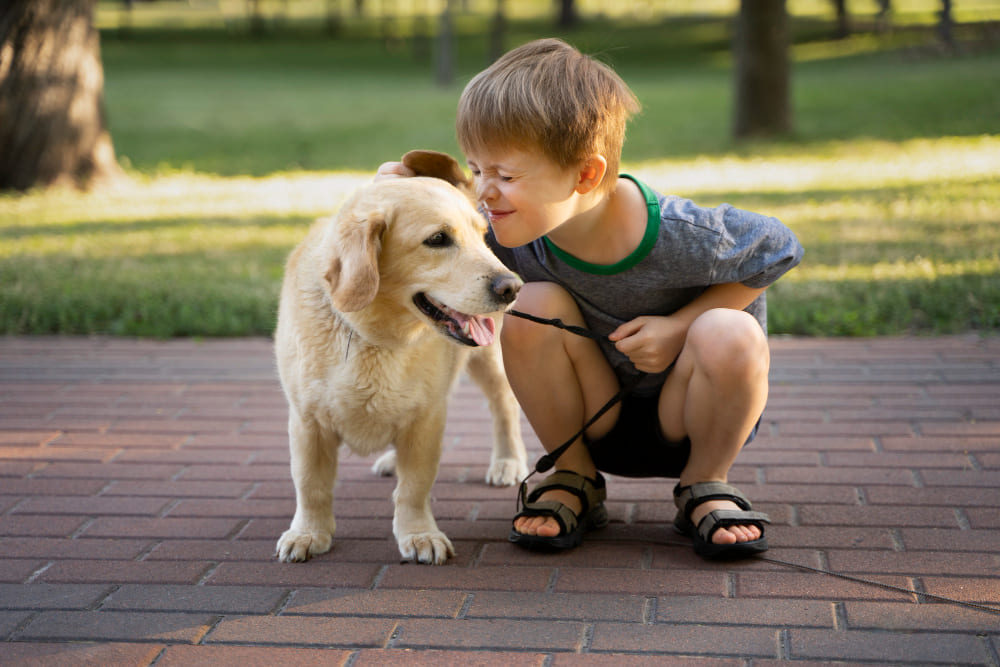The Emotional Bond Between Pets and Kids: What Science Says

For centuries, pets have been companions to humans, offering loyalty, affection, and a special kind of friendship that transcends words. But in recent years, science has begun to explore a deeper dimension to this relationship—particularly the emotional bond that forms between children and their animal companions. From increased empathy and responsibility to lower stress levels and enhanced cognitive development, the presence of a pet in a child’s life has been shown to provide remarkable psychological and physiological benefits. This isn’t just anecdotal—numerous studies now support what many families have always known intuitively: pets aren't just playmates for kids, they’re emotional anchors and developmental allies.
One of the most profound findings in research is that the bond between a child and a pet can mirror human attachment patterns. Pets, especially dogs and cats, often become a child’s first confidante—someone they can talk to, play with, and trust unconditionally. In homes where emotional expression is encouraged, children are more likely to form strong attachments to pets, which in turn helps them develop a greater understanding of nonverbal communication, body language, and emotional empathy. In fact, some psychologists suggest that children who grow up with pets tend to be more emotionally intelligent because they learn to interpret feelings and moods through the behaviors of their animals.
Pets also offer a unique form of emotional stability during times of stress, trauma, or transition. Whether it’s a move to a new city, the arrival of a sibling, or challenges in school, pets provide consistent comfort. A study conducted by Tufts University found that children who had close relationships with their pets reported feeling more secure and less anxious during difficult life events. The calming effect of petting a dog or hugging a cat can lower cortisol levels and stimulate the release of oxytocin—the so-called "love hormone"—which fosters feelings of safety and calm. This explains why therapy animals are increasingly being introduced in schools and hospitals to help children manage anxiety, autism, and other emotional challenges.
Moreover, the responsibilities that come with caring for a pet—feeding, grooming, walking—help children develop a sense of accountability and purpose. When kids are involved in these daily routines, they learn consistency and patience, key traits that positively affect their behavior in other areas of life, such as school and friendships. Children with pets often display greater resilience and adaptability because they experience both the joys and responsibilities of caregiving from an early age. These lessons are often deeply ingrained and carry through to adulthood, influencing how they build relationships and manage emotional connections in the future.
There is also a growing body of evidence linking pet ownership to cognitive development. A child who talks to their pet, tells them stories, or reads aloud to them is not only engaging emotionally but also practicing verbal communication and narrative skills. These interactions, though seemingly simple, can improve vocabulary, comprehension, and even literacy. In some classrooms, reading programs have introduced therapy dogs to sit with children as they read aloud. The nonjudgmental presence of a dog has been shown to reduce the fear of failure or embarrassment, making children more confident readers.
From a cultural perspective, pets can also help bridge the gap between different generations. Grandparents, parents, and children may all share the care of a family pet, creating opportunities for bonding, storytelling, and shared experiences. For children who may feel disconnected from family members due to age or communication barriers, a pet can act as a common emotional link that fosters togetherness. Additionally, in families going through separation, loss, or grief, pets often help children cope by providing a reliable source of comfort and companionship.
Ultimately, the emotional bond between kids and pets is not just heartwarming—it’s developmentally significant. While every child and animal is different, the potential for growth, healing, and connection is universal. As science continues to uncover the profound impact pets have on children’s emotional and psychological health, it becomes clear that welcoming a pet into your home is not just about adding a new member to the family—it’s about opening the door to a lifelong friendship that nurtures the heart and mind.
In a world where digital distractions and fast-paced lifestyles often reduce the time children spend forming deep emotional connections, pets offer a grounding presence. They remind kids to live in the moment, to care for another being selflessly, and to love without conditions. The wag of a tail, the purr of contentment, or even the mischievous chirp of a pet bird can light up a child’s world in ways no screen ever could. And that, science says, is a bond worth nurturing.